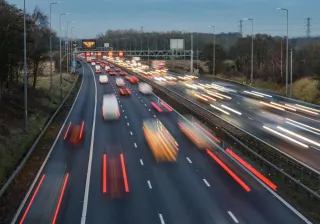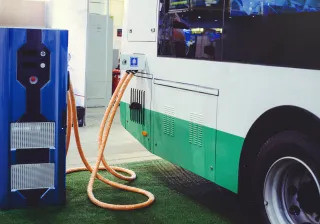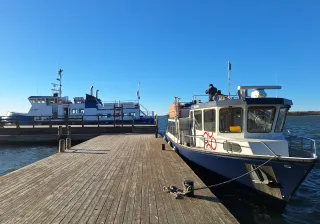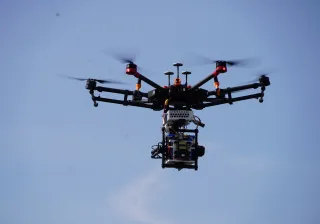The transformation of mobility and transport is no longer a matter of technology. Driving ranges for EVs are increasing, battery and fuel cell aircrafts are expected in passenger traffic in the 2020s, and autonomous functionalities are all around us – from cars to delivery robots. However, the transition toward low-carbon transport will not happen unwillingly; we need solutions that users will feel excited about.
International CO2 regulation, the uncertainty of the energy market and the Russian war in Ukraine are now driving the shift toward more sustainable propulsion systems in transport. This year has shown in concrete terms that low carbon alternatives to traditional fuels become more appealing as they become economically more competitive. The electrification of transport goes hand in hand with tightening regulations and changing cost structures.
The electrification of private cars and local buses is happening fast, but there is a need for a broad range of alternatives to cater to heavy goods transport, maritime and air. Bio and electric fuels, biomethane, hydrogen and ammonia for marine transport are also an important part of the overall transport transformation. Battery-based and fuel cell-based electric aircrafts carrying around 10-20 passengers will become a part of air traffic within the next 10 years on shorter distances.
New solutions are now being developed at an accelerating pace for the needs of both consumers and industry. At VTT, we have decided to invest in an innovation centre for clean propulsion solutions for transport to be built in Espoo.
Consumers are interested in new innovations, but there is no desire to compromise on convenience
A new and greener transport system is not about hype over technologies that are too expensive or niche to the public. Instead, change is built on solutions that genuinely serve users. From the point of view of the transport system, the transition requires user-driven approaches and agile integration of different mobility solutions.
New technologies and mobility solutions are mostly welcomed with curiosity and open-minded attitudes. Whenever users are involved in planning and innovation since the very beginning, it becomes easier for new forms of mobility to become part of our daily lives.
From the point of view of the transport system, the transition requires user-driven approaches and agile integration of different mobility solutions.
In the automotive industry, the platform approach is accelerating innovation and introducing new players to the market. Although sci-fi film style robot cars have not yet replaced humans as drivers, autonomous functionalities have become a part of our daily lives in various forms. More and more autonomous features are integrated into cars, and many of us have already come across delivery robots carrying shopping bags. In the near future, we will be able to update car software the way we do mobile phones, allowing us to add handy new features with just a few clicks.
Electric vehicles also have a huge amount of power available compared to previous cars - and this too opens up new possibilities. The so-called V2G technology can also be used to feed power from the car back to the network. The battery energy of an electric vehicle could be used to run all the electricity needs of a summer cottage during a weekend trip.
Cities face a huge challenge, but they also hold the key to change
As the transformation picks up speed, cities face major challenges. Expensive investments in rigid main lines are not enough. For example, rail traffic only takes the passenger to the station, but it is crucial to ensure that the passenger gets smoothly all the way to their front door. A good example is a robot bus by Roboride and VTT, which is being piloted in Tampere, where it brings more city residents within the reach of the new tram line.
The increasing use of electric transport requires a well-functioning charging infrastructure that meets the needs of both private motorists and the public transport system. Entirely new modes of transport like electric scooters, delivery robots and drones have also appeared on our streets in recent years. While they add agile mobility solutions, they also cause regulatory headaches for cities. To keep up with the speed of the transformation, cities need fast and efficient permitting and zoning processes. An important enabler in the transition are data-based modelling and simulation tools that can be used, for example, to tailor the charging network to meet traffic flows and the needs of the city residents.
Now is a good time to get excited about the future of transport. However, it is also up to each of us to ensure that the mobility transformation is done fairly and equally, with diverse needs and environments taken into account.
The transformation of traffic belongs to everyone
Now is a good time to get excited about the future of transport. However, it is also up to each of us to ensure that the mobility transformation is done fairly and equally, with diverse needs and environments taken into account. In Finland, we have a lot of diverse expertise in the transport sector, whether it be sensors operating in demanding winter conditions, reliable and cybersecure communications, green electric or hydrogen technologies, or simulations based on large data masses.
We will continue to need solutions for buzzing urban hubs, heavy industries and sparsely populated areas and winter weather. Our expertise is needed so that future innovations also work in our climate conditions.







